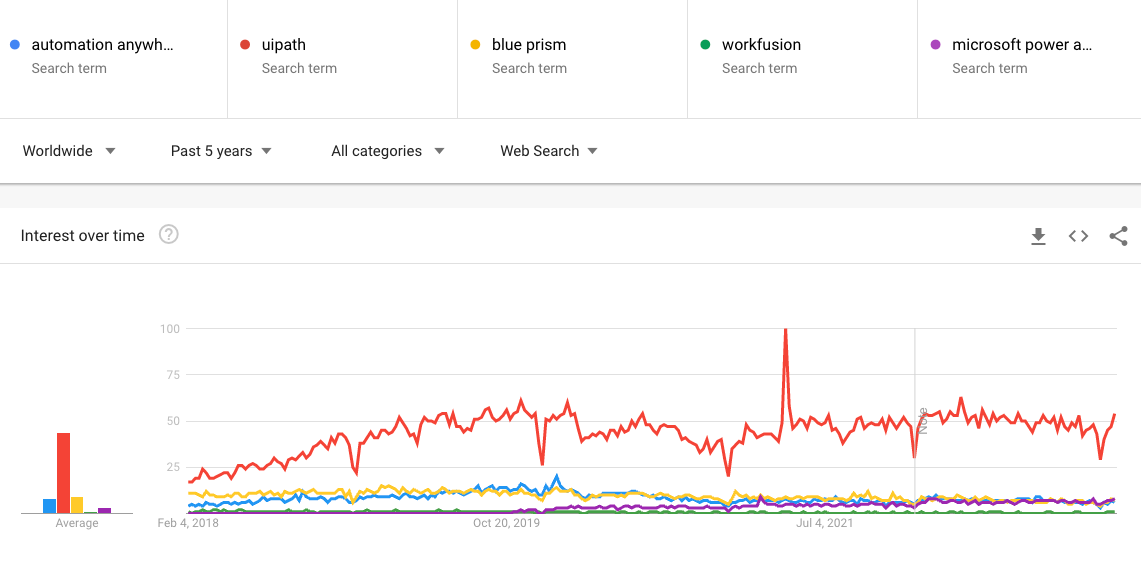
Cem has been the principal analyst at AIMultiple since 2017. AIMultiple informs hundreds of thousands of businesses (as per similarWeb) including 55% of Fortune 500 every month.
Cem's work has been cited by leading global publications including Business Insider, Forbes, Washington Post, global firms like Deloitte, HPE and NGOs like World Economic Forum and supranational organizations like European Commission. You can see more reputable companies and resources that referenced AIMultiple.
Throughout his career, Cem served as a tech consultant, tech buyer and tech entrepreneur. He advised enterprises on their technology decisions at McKinsey & Company and Altman Solon for more than a decade. He also published a McKinsey report on digitalization.
He led technology strategy and procurement of a telco while reporting to the CEO. He has also led commercial growth of deep tech company Hypatos that reached a 7 digit annual recurring revenue and a 9 digit valuation from 0 within 2 years. Cem's work in Hypatos was covered by leading technology publications like TechCrunch and Business Insider.
Cem regularly speaks at international technology conferences. He graduated from Bogazici University as a computer engineer and holds an MBA from Columbia Business School.
We follow ethical norms & our process for objectivity. Brands with links to their websites fund our research.

And with the increased importance of automated testing, UiPath’s recent release of its Test Suite – which allows all testing to be done in a single repository 2 – will only increase their popularity.
However, an unclear RPA pricing model can be an adoption barrier, or lead to a lower ROI, with you paying more but getting less. If you want to get a high value for money, you should know exactly what you are paying for.
This article is for business leaders who want to use UiPath’s robotic process automation solution to automate processes, but are confused by its pricing models. We will explain all the new features and tools that UiPath offers, along a full comparison of UiPath pricing plans.
UiPath plans mainly differ on the number of licenses, tenants, attended and unattended bots, and the UiPath Studio. The more you need each of these, the more you’d pay.

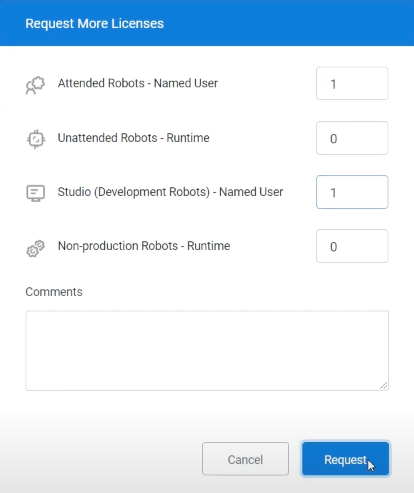
The aforementioned features are packed in three cloud-based UiPath RPA platform:
In the free version of UiPath, users have access to:
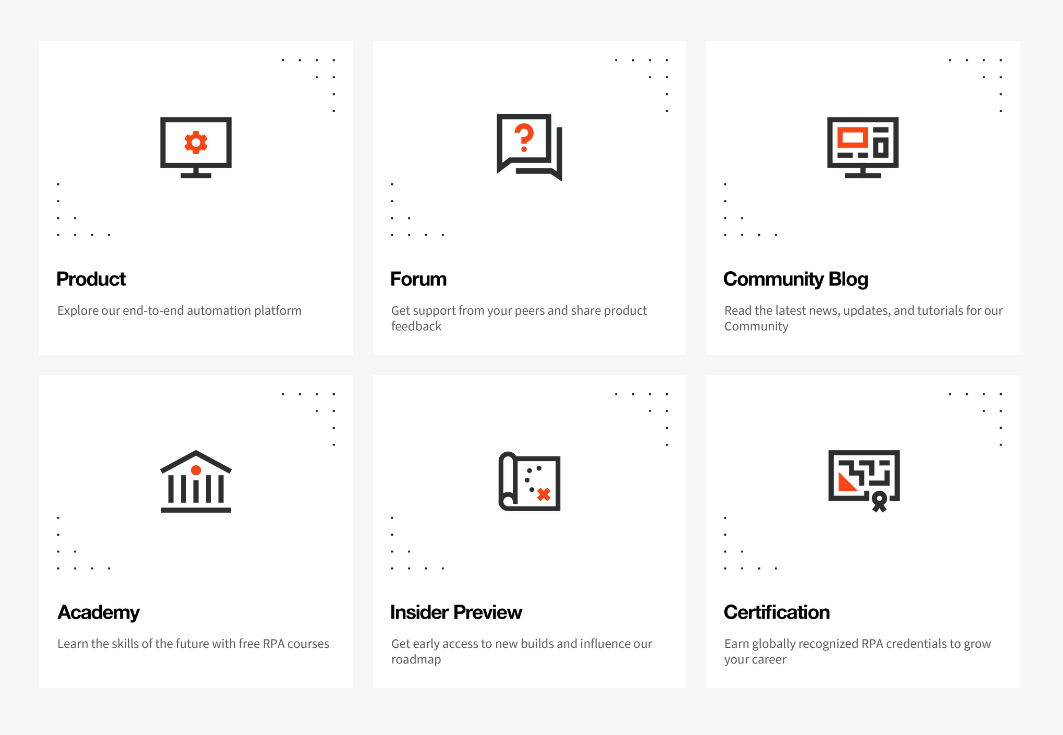
You can use the free version for up to 60 days at no cost.
In addition to task capture and process integration, UiPath’s Pro Package provides users with:
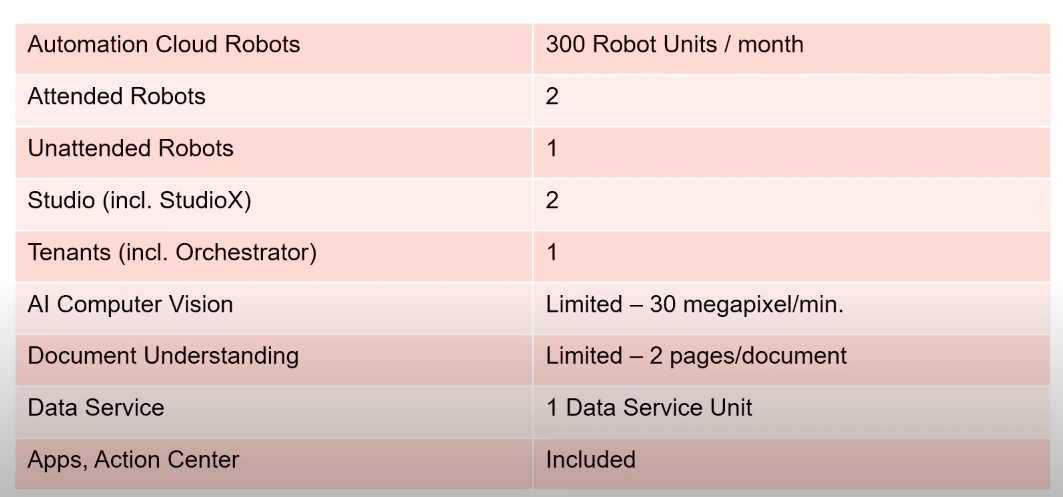
Undisclosed. Per an unofficial report, it cost $97,000 3 in 2021.
Software vendors are intentionally vague with their licensing costs to incentivize you to reach out and sit through a sales call. Even the Pro Package, which has a clarified pricing of $420, can quickly increase with ad-ons. So, it was a bit hard to find how much a certain company, with certain requirements, paid for any of the packages.
The general consensus 4 is that UiPath doesn’t have an affordable price, and that the license cost can deter SMEs, with limited budgets, from adopting the UiPath platform (Figure 7). Having said that, there are users who view UiPath as an economical RPA choice given its features and capabilities.
Ultimately, whether UiPath RPA is considered expensive or not is a subjective matter and may depend on individual circumstances and automation and scalability needs.
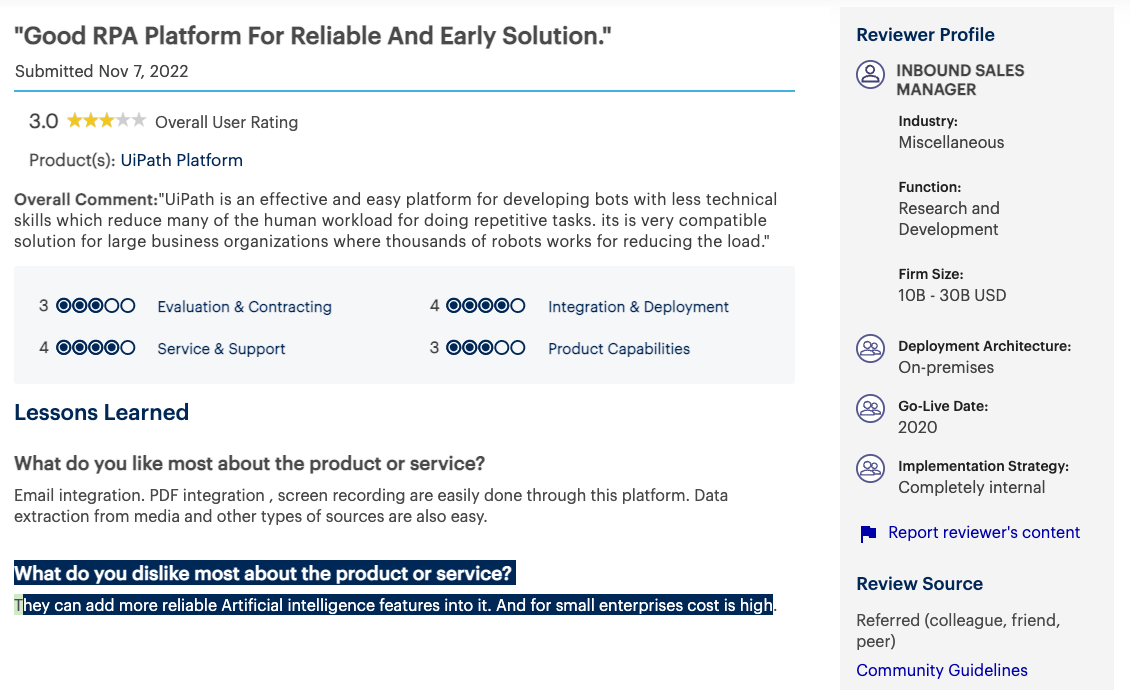
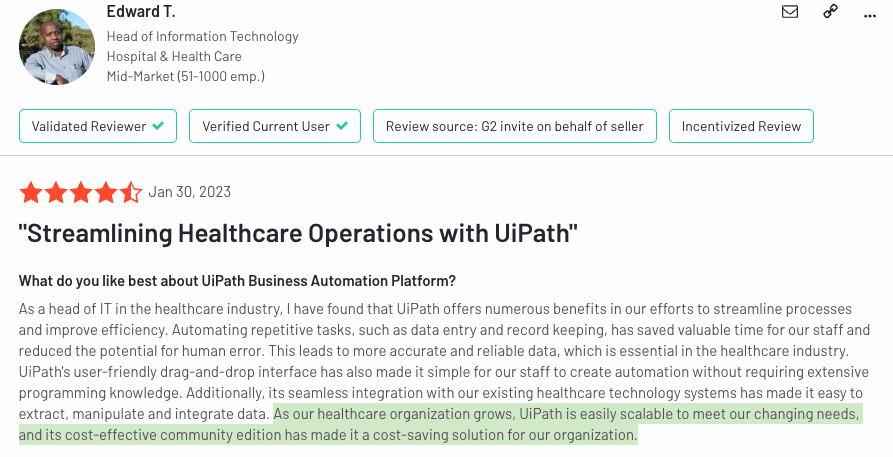
If you want to invest in an RPA solution, head over to our data-driven, sortable list of RPA vendors:
Sometimes, you might need an RPA partner to help with the integration into existing systems. Download our RPA partner whitepaper to learn more:
RPA is a technology for developing customized agents that work with GUI elements to carry out routine rules-based operations.
RPA leads to cost reduction, workforce augmentation, and expediting task execution speed.
Solutions offered by big market players that operate on the same wavelength as UiPath include, but aren’t limited to, IBM RPA, Microsoft’s Power Automate, Automation Anywhere, and WorkFusion.
RPA tends to be more flexible, cost friendly and easy to integrate with other systems compared to other automation solutions.
This article was originally written by former AIMultiple industry analyst Bardia Eshghi and reviewed by Cem Dilmegani.
Cem has been the principal analyst at AIMultiple since 2017. AIMultiple informs hundreds of thousands of businesses (as per similarWeb) including 55% of Fortune 500 every month.
Cem's work has been cited by leading global publications including Business Insider, Forbes, Washington Post, global firms like Deloitte, HPE and NGOs like World Economic Forum and supranational organizations like European Commission. You can see more reputable companies and resources that referenced AIMultiple.
Throughout his career, Cem served as a tech consultant, tech buyer and tech entrepreneur. He advised enterprises on their technology decisions at McKinsey & Company and Altman Solon for more than a decade. He also published a McKinsey report on digitalization.
He led technology strategy and procurement of a telco while reporting to the CEO. He has also led commercial growth of deep tech company Hypatos that reached a 7 digit annual recurring revenue and a 9 digit valuation from 0 within 2 years. Cem's work in Hypatos was covered by leading technology publications like TechCrunch and Business Insider.
Cem regularly speaks at international technology conferences. He graduated from Bogazici University as a computer engineer and holds an MBA from Columbia Business School.